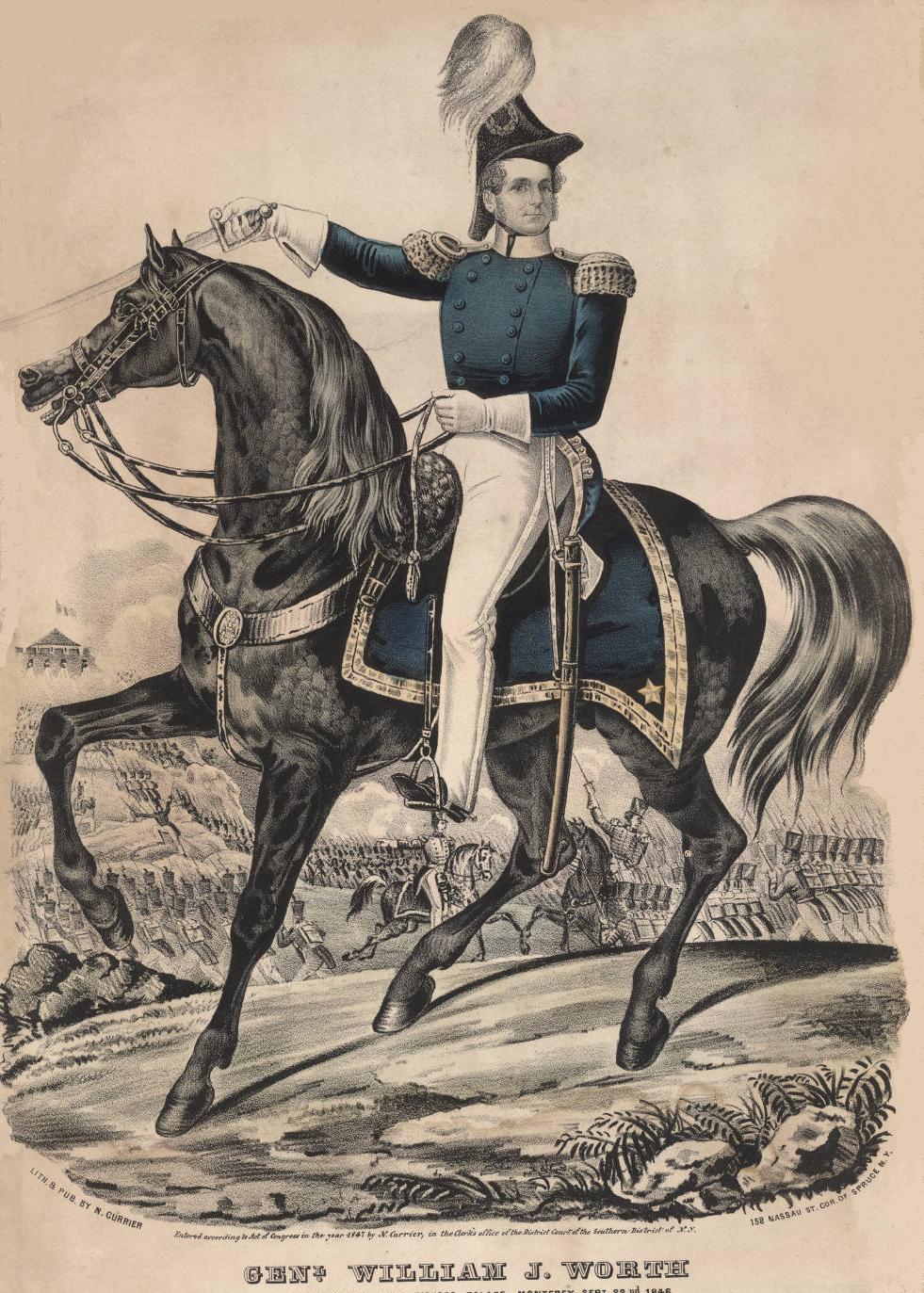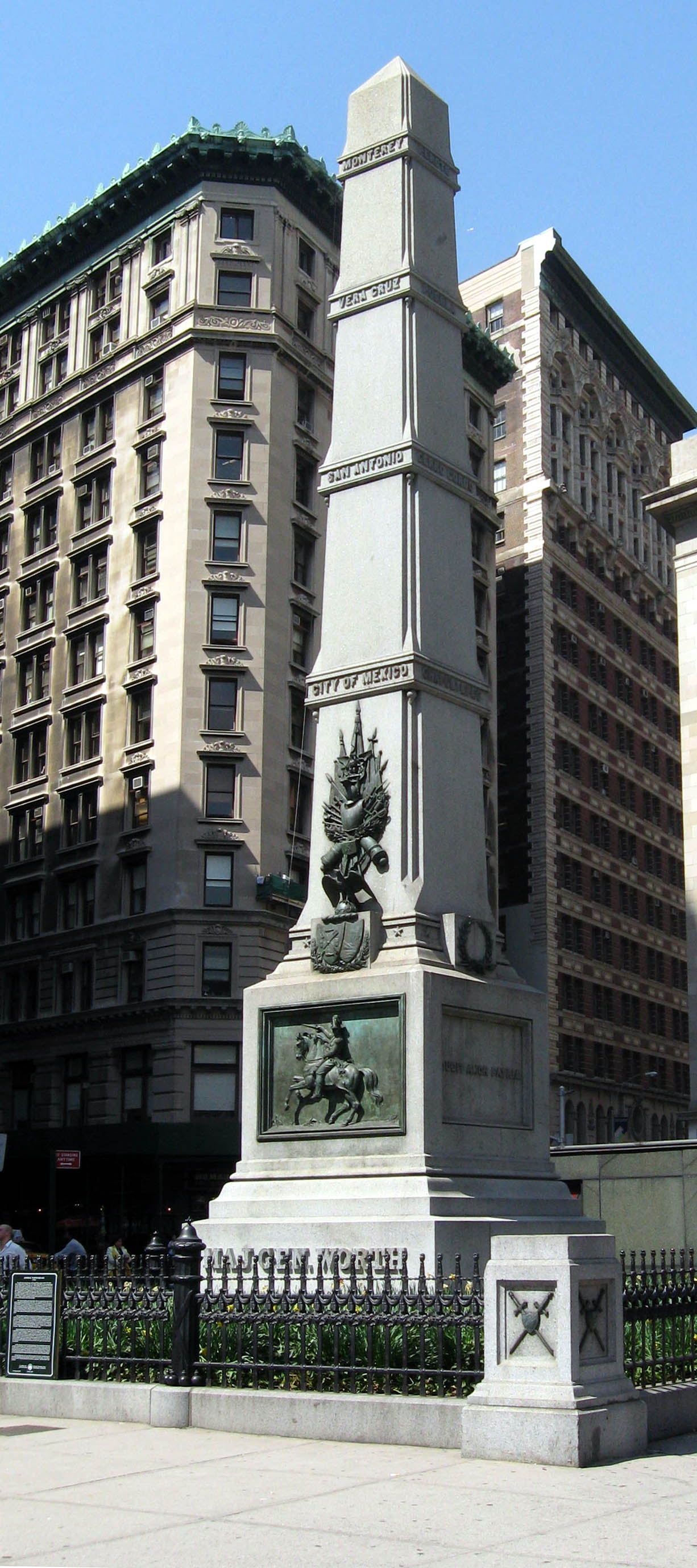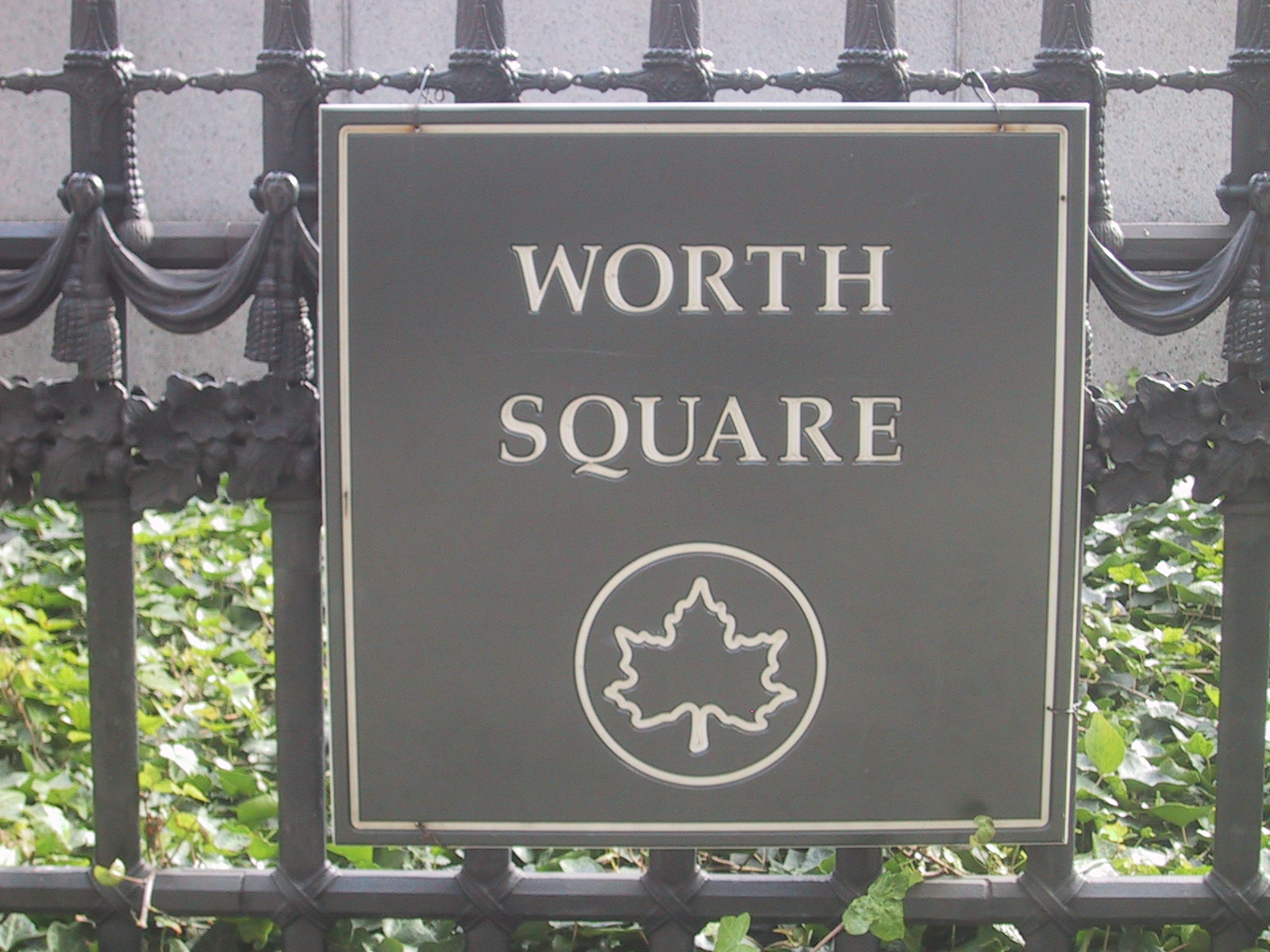William J. Worth on:
[Wikipedia]
[Google]
[Amazon]
William Jenkins Worth (March 1, 1794 – May 7, 1849) was an American officer during the

 Worth was commissioned as a
Worth was commissioned as a

 He took part in the
He took part in the
Worth, William Jenkins
{{DEFAULTSORT:Worth, William J. 1794 births 1849 deaths American military personnel of the Mexican–American War American people of the Seminole Wars Commandants of the Corps of Cadets of the United States Military Academy Deaths from cholera Florida pioneers History of Fort Worth, Texas Infectious disease deaths in Texas Members of the Aztec Club of 1847 Military personnel from Albany, New York
War of 1812
The War of 1812 (18 June 1812 – 17 February 1815) was fought by the United States, United States of America and its Indigenous peoples of the Americas, indigenous allies against the United Kingdom of Great Britain and Ireland, United Kingdom ...
, the Second Seminole War, and the Mexican–American War
The Mexican–American War, also known in the United States as the Mexican War and in Mexico as the (''United States intervention in Mexico''), was an armed conflict between the United States and Mexico from 1846 to 1848. It followed the 1 ...
.
Early military career

first lieutenant
First lieutenant is a commissioned officer military rank in many armed forces; in some forces, it is an appointment.
The rank of lieutenant has different meanings in different military formations, but in most forces it is sub-divided into a ...
in March 1813, serving as an aide to (then brigadier general) Winfield Scott
Winfield Scott (June 13, 1786May 29, 1866) was an American military commander and political candidate. He served as a general in the United States Army from 1814 to 1861, taking part in the War of 1812, the Mexican–American War, the early s ...
during the war, and developing a friendship with him. He later named his son Winfield Scott Worth. He distinguished himself at the battles of Chippewa and Lundy's Lane during the Niagara campaign
The Niagara campaign occurred in 1814 and was the final campaign launched by the United States to invade Canada during the War of 1812. The campaign was launched to counter the British offensive in the Niagara region which had been initiated with t ...
. In the latter battle, he was seriously wounded by grapeshot in the thigh. He was not expected to survive, but after a year's confinement, he emerged with the breveted rank of Major—though he would remain lame for the rest of his life. Also as a brevet Major Worth uttered his most famous words that are now inscribed in West Point's "Bugle Notes", a book of knowledge all cadets must know by heart. They are as follows:
After the war he was Commandant of Cadets at West Point
The United States Military Academy (USMA), also known Metonymy, metonymically as West Point or simply as Army, is a United States service academies, United States service academy in West Point, New York. It was originally established as a f ...
and would rise to the rank of Colonel
Colonel (abbreviated as Col., Col or COL) is a senior military officer rank used in many countries. It is also used in some police forces and paramilitary organizations.
In the 17th, 18th and 19th centuries, a colonel was typically in charge o ...
in 1838 when he was put in command of the newly created Eighth Infantry Regiment. Using his own tactics he successfully prosecuted the Second Seminole War in Florida
Florida is a state located in the Southeastern region of the United States. Florida is bordered to the west by the Gulf of Mexico, to the northwest by Alabama, to the north by Georgia, to the east by the Bahamas and Atlantic Ocean, and to ...
and was made a brevet brigadier general
Brigadier general or Brigade general is a military rank used in many countries. It is the lowest ranking general officer in some countries. The rank is usually above a colonel, and below a major general or divisional general. When appointed ...
in 1842. Eventually, he convinced Secretary of War
The secretary of war was a member of the U.S. president's Cabinet, beginning with George Washington's administration. A similar position, called either "Secretary at War" or "Secretary of War", had been appointed to serve the Congress of the ...
John C. Spencer to allow the remaining Indians in the territory to confine themselves to an unofficial reservation in southwest Florida, and declared an official end to the war in August of that year.
Mexican–American War
When theMexican–American War
The Mexican–American War, also known in the United States as the Mexican War and in Mexico as the (''United States intervention in Mexico''), was an armed conflict between the United States and Mexico from 1846 to 1848. It followed the 1 ...
began Worth was serving under Zachary Taylor
Zachary Taylor (November 24, 1784 – July 9, 1850) was an American military leader who served as the 12th president of the United States from 1849 until his death in 1850. Taylor was a career officer in the United States Army, rising to th ...
in Texas
Texas (, ; Spanish: ''Texas'', ''Tejas'') is a state in the South Central region of the United States. At 268,596 square miles (695,662 km2), and with more than 29.1 million residents in 2020, it is the second-largest U.S. state by ...
and negotiated the surrender of the Mexican city of Matamoros. He next commanded the 2nd Regular Division, Army of Occupation at the Battle of Monterrey
In the Battle of Monterrey (September 21–24, 1846) during the Mexican–American War, General Pedro de Ampudia and the Mexican Army of the North was defeated by the Army of Occupation, a force of United States Regulars, Volunteers an ...
in September 1846, for which he was later brevetted to major general. In 1847, Worth was transferred to his old friend Winfield Scott's army and placed in command of the 1st Division.
Siege of Veracruz
The Battle of Veracruz was a 20-day siege of the key Mexican beachhead seaport of Veracruz during the Mexican–American War. Lasting from March 9–29, 1847, it began with the first large-scale amphibious assault conducted by United States ...
and engaged in the battles of Cerro Gordo, Contreras and Churubusco. In Mexico City
Mexico City ( es, link=no, Ciudad de México, ; abbr.: CDMX; Nahuatl: ''Altepetl Mexico'') is the capital city, capital and primate city, largest city of Mexico, and the List of North American cities by population, most populous city in North Amer ...
Scott ordered Worth to seize the Mexican works at the Molino del Rey. Worth and Scott's friendship came to a head when Scott refused to allow Worth to modify the attack and the battle caused the 1st Division severe casualties, much to Worth's dismay. Worth later renamed his son Winfield Scott to William. He next led his division against the San Cosme Gate at Mexico City. When U.S. forces entered Mexico City, Worth personally climbed to the roof of the National Palace and took down the Mexican flag replacing it with the Stars and Stripes.
For his service at the Battle of Chapultepec
The Battle of Chapultepec was a battle between American forces and Mexican forces holding the strategically located Chapultepec Castle just outside Mexico City, fought 13 September 1847 during the Mexican–American War. The building, sitting ...
, the United States Congress
The United States Congress is the legislature of the federal government of the United States. It is bicameral, composed of a lower body, the House of Representatives, and an upper body, the Senate. It meets in the U.S. Capitol in Washing ...
awarded him with a sword of honor.
In 1847, Worth became an Original Member of the Aztec Club of 1847 and was admitted as an honorary member of the New York Society of the Cincinnati.
Postwar service and death
In 1848, Worth was approached by a group of Cuban Freemasons known as the Havana Club, composed of sugar plantation owners and aristocrats, who advocated the overthrow of the Spanish colonial government in Cuba. The Havana Club sent a college professorAmbrosio José Gonzales
Ambrosio José Gonzales (October 3, 1818 – July 31, 1893) was a Cuban revolutionary general who became a colonel in the Confederate Army during the American Civil War. Gonzales, as a revolutionary, wanted the United States to annex Cuba.
Durin ...
to entreat Worth to lead an invasion of Cuba.
Knowing Worth was also a Freemason, Gonzales greeted the war hero with the Masonic secret handshake, and subsequently offered him three million dollars to lead an invasion force of five thousand American veterans of the Mexican-American War against the Spanish in Cuba. Worth accepted the offer, but before the plot could be concluded, he was transferred by the War Department to Texas.
Worth was in command of the Department of Texas when he died in 1849 in San Antonio
("Cradle of Freedom")
, image_map =
, mapsize = 220px
, map_caption = Interactive map of San Antonio
, subdivision_type = Country
, subdivision_name = United States
, subdivision_type1= State
, subdivision_name1 = Texas
, subdivision_t ...
of cholera.
Worth Square
Worth's remains were originally deposited in Greenwood Cemetery where they sat unburied for 4 years. In January of 1855, a committee was established to design a suitable monument for General Worth. The monument was designed and built byJames G. Batterson
James Goodwin Batterson (February 23, 1823 – September 18, 1901) was an American designer and builder, the owner of New England Granite Works from 1845 and a founder in 1863 of Travelers Insurance Company, both in Hartford, Connecticut. He ...
in 1857. On November 25, 1857, Worth's remains were reinterred in the 51-foot granite monument on Worth Square
Worth Square, or General Worth Square, is a public square in Manhattan located at East 25th Street between Broadway and Fifth Avenue directly west of Madison Square Park. The location was designated as a public park in 1847, and since 1857 the sq ...
on a traffic island between Fifth Avenue and Broadway
Broadway may refer to:
Theatre
* Broadway Theatre (disambiguation)
* Broadway theatre, theatrical productions in professional theatres near Broadway, Manhattan, New York City, U.S.
** Broadway (Manhattan), the street
**Broadway Theatre (53rd Stree ...
at 25th Street in New York City
New York, often called New York City or NYC, is the most populous city in the United States. With a 2020 population of 8,804,190 distributed over , New York City is also the most densely populated major city in the Un ...
's borough
A borough is an administrative division in various English-speaking countries. In principle, the term ''borough'' designates a self-governing walled town, although in practice, official use of the term varies widely.
History
In the Middle A ...
of Manhattan
Manhattan (), known regionally as the City, is the most densely populated and geographically smallest of the five boroughs of New York City. The borough is also coextensive with New York County, one of the original counties of the U.S. state ...
. The Worth Monument is the second oldest monument in New York.
The monument’s central decorative bands are inscribed with battle sites significant in Worth’s career and attached to its front is a bronze equestrian relief of Worth.
Each spike of the cast-iron fence surrounding the memorial is topped with a plumed helmet, reflective of the plumed helmet Worth is shown wearing in the memorial. The American painter Thomas Hart Benton depicted the obelisk in ''New York, Early Twenties''. The north side fence was removed around 1940 to accommodate an above-ground utility shed which services the water supply system pipes beneath the monument.
Legacy
The cities of Fort Worth and Lake Worth in Texas, the villages of Worth in Illinois and Worthville in Kentucky, and the Worth Counties inGeorgia
Georgia most commonly refers to:
* Georgia (country), a country in the Caucasus region of Eurasia
* Georgia (U.S. state), a state in the Southeast United States
Georgia may also refer to:
Places
Historical states and entities
* Related to the ...
, Missouri
Missouri is a state in the Midwestern region of the United States. Ranking 21st in land area, it is bordered by eight states (tied for the most with Tennessee): Iowa to the north, Illinois, Kentucky and Tennessee to the east, Arkansas t ...
, and Iowa
Iowa () is a state in the Midwestern region of the United States, bordered by the Mississippi River to the east and the Missouri River and Big Sioux River to the west. It is bordered by six states: Wisconsin to the northeast, Illinois to th ...
are all named in his honor. In Florida the Lake Worth Lagoon
The Lake Worth Lagoon is a lagoon located in Palm Beach County, Florida. It runs parallel to the coast, and is separated from the Atlantic Ocean by barrier beaches, including Palm Beach Island. The lagoon is connected to the Atlantic Ocean by two ...
, the city of Lake Worth Beach, and Worth Avenue in Palm Beach are also named after him. Additionally, Worth Street
Worth Street is a two-way street running roughly northwest-southeast in Manhattan, New York City. It runs from Hudson Street, TriBeCa, in the west to Chatham Square in Chinatown in the east. Past Chatham Square, the roadway continues as Oliver ...
in the Lower Manhattan
Manhattan (), known regionally as the City, is the most densely populated and geographically smallest of the five boroughs of New York City. The borough is also coextensive with New York County, one of the original counties of the U.S. state ...
district of New York City
New York, often called New York City or NYC, is the most populous city in the United States. With a 2020 population of 8,804,190 distributed over , New York City is also the most densely populated major city in the Un ...
was named in his honor.
See also
*Seminole Wars
The Seminole Wars (also known as the Florida Wars) were three related military conflicts in Florida between the United States and the Seminole, citizens of a Native American nation which formed in the region during the early 1700s. Hostilities ...
* Battle of Molino del Rey
The Battle of Molino del Rey (8 September 1847) was one of the bloodiest engagements of the Mexican–American War as part of the Battle for Mexico City. It was fought in September 1847 between Mexican forces under General Antonio León against ...
* Battle for Mexico City
The Battle for Mexico City refers to the series of engagements from September 8 to September 15, 1847, in the general vicinity of Mexico City during the Mexican–American War. Included are major actions at the battles of Molino del Rey and Ch ...
* William S. Worth, his son
References
Further reading
* Mahon, John K. ''History of the Second Seminole War, 1835-1842'', Revised Edition. Gainesville: University Press of Florida, 1985. * Wallace, Edward S. ''General William Jenkins Worth, Monterey's Forgotten Hero''. Dallas: Southern Methodist University Press, 1953.External links
Worth, William Jenkins
{{DEFAULTSORT:Worth, William J. 1794 births 1849 deaths American military personnel of the Mexican–American War American people of the Seminole Wars Commandants of the Corps of Cadets of the United States Military Academy Deaths from cholera Florida pioneers History of Fort Worth, Texas Infectious disease deaths in Texas Members of the Aztec Club of 1847 Military personnel from Albany, New York